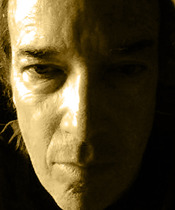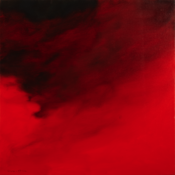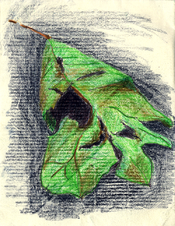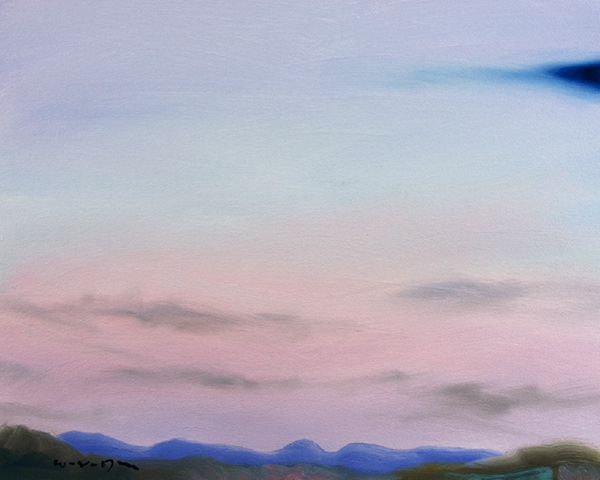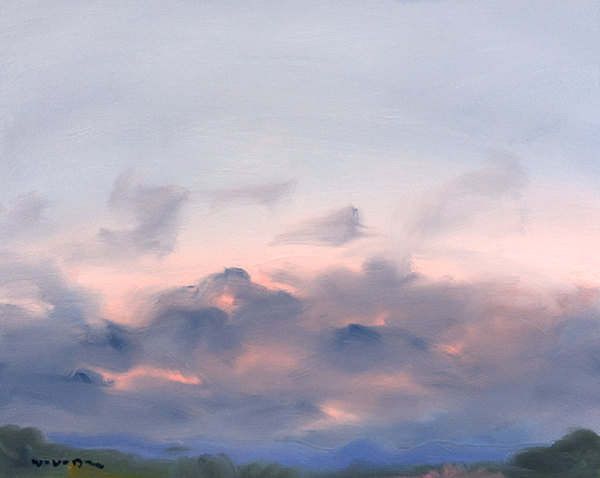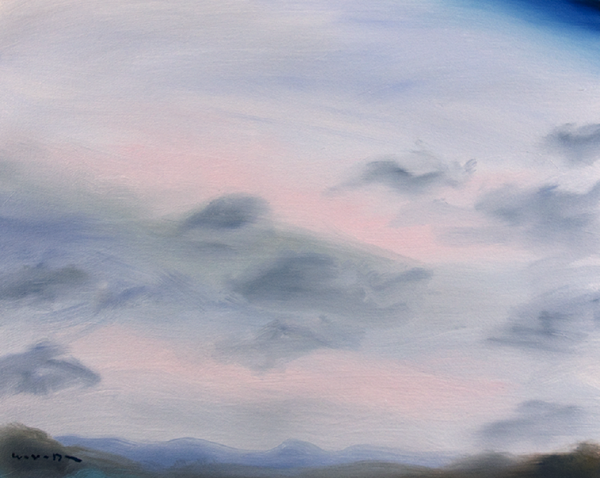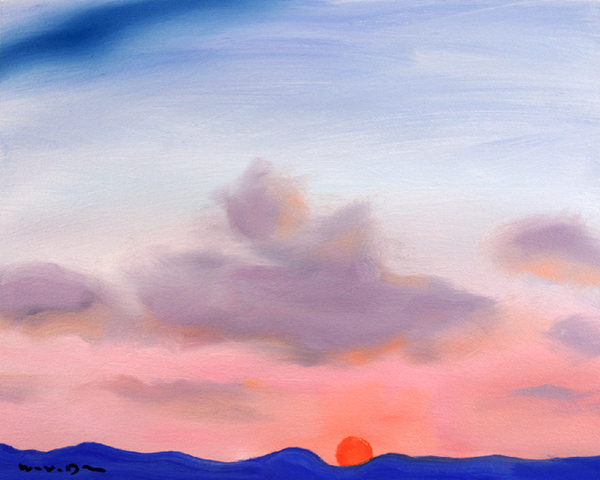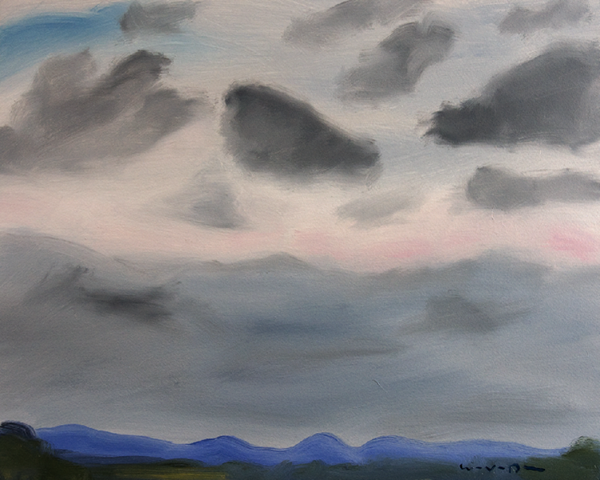 Stony Point, Albemarle County, Va. Oil on paper, 16 x 20.
Stony Point, Albemarle County, Va. Oil on paper, 16 x 20.
I guess, having written about sumac, of all things, which probably only a handful of people in the world care about – none of whom read this blog – I’m forced to keep writing about it, just to get my story straight.
Turns out that I was wrong twice (and counting?). I was wrong from the age of 12, let’s say, until last week, while I assumed that the sumac around here was staghorn sumac. O.K., no disgrace, I think I got the idea from my Boy Scouts manual, which was probably written by Yankees. (Staghorn is what they have.)
But I should have paid more attention to detail when I said that what we have, in profusion down in the Scrubby Field, is scarlet sumac. I think I liked the name. It isn’t. Apparently, it’s what they call shining sumac, or something close to it.
This I know because the leaves have ‘wings’ – as seen here:
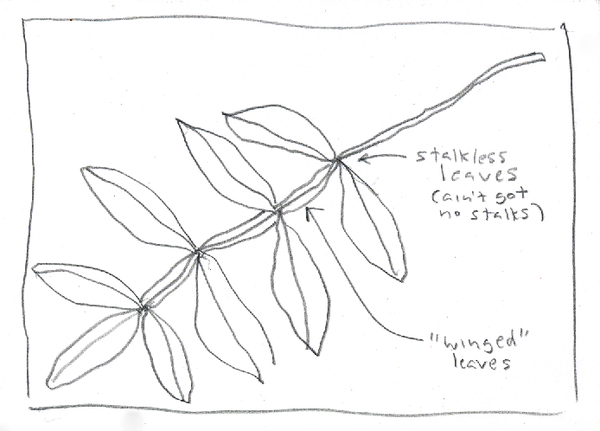
The stem has a narrow band of green leaf running up along it, from leaflet to leaflet – those are wings. And the leaflets don’t have stalks. Botany is tough.
And it’s probably not over. I’ve previously described the fruit as clusters turning from the color of gold grapes to two shades of magenta. Well, maybe that’s only the female plants. The field is also filled with what looks like the same sumac, except the fruit clusters are flowering much more yellow – each flower with (I think) five bright gold stamens. We’ll see how both types of plants turn out.
Perhaps the only way I can ever make all of this up to you is to paint the field at some point.
On a different subject entirely, I made an interesting musical discovery tonight while cooking a sauce, for gnocchi, of zucchini, garlic and tomato. The first 67 or 89 times I played Bob Dylan’s “Mississippi,” from Love And Theft, I was just glued to it; it pretty much killed me. But then, maybe because my frame of mind was brightening a bit, the next 23 or 31 times I played it, it seemed kind of oppressive. Great, of course, but a little oppressive.
What I discovered while cooking is that if you sing along with Bob, and sing around him – almost doesn’t matter how – and sing the lines more loosely than he does, perhaps making them a little longer, it seems to transform the experience. Makes it like a new song. Of course, the people who know “Mississippi” may be the very same ones who care about sumac.
 Monday, August 10, 2009 at 07:00AM | by
Monday, August 10, 2009 at 07:00AM | by  BVD | in
BVD | in  Poetry | tagged
Poetry | tagged  Blue Ridge,
Blue Ridge,  Bucks Elbow,
Bucks Elbow,  Crozet | | Comments Off
Crozet | | Comments Off 
